Puppets that dance on the water are generally known as Vietnamese water puppetry. This is because the art is deemed to come from Vietnam. The exact time when it began is not known but an early record of the art was found on a stone stele dating back to the 11th century in the Red River Delta, North Vietnam. Initially, water puppetry only performed in ponds and paddy fields upon farm work completion, a successful crop or special occasions such as festivals or Lunar New Year.
A puppetry show is a creative combination of two seemingly unfitted and unrelated elements; the water and the puppets. For Vietnamese farmers, water is a dear companion without which, rice – the primary Vietnamese diet – cannot grow. Using water as a stage floor is a unique creation by famers who spend days on end in waterlogged paddy fields. It conceals controllers’ maneuvers while allowing for natural effects like waves and splashes that make the show exciting.
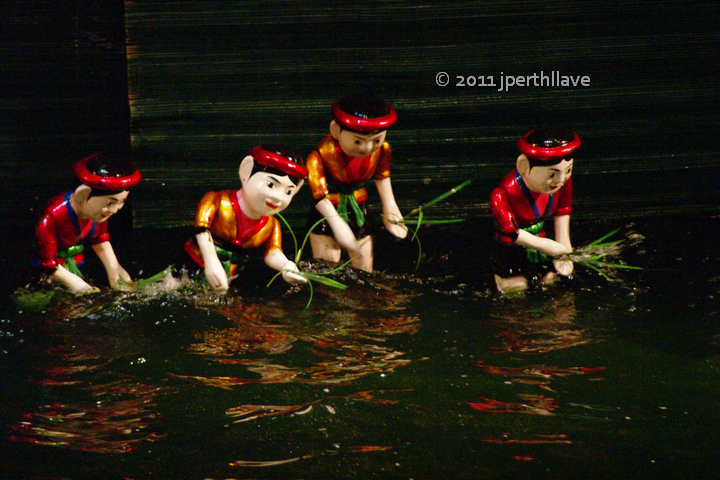
Puppets are handicraft items whose making includes four meticulous steps namely carving, drying, sculpturing and finishing. Weighty wood though is generally not qualified for material as its causes the puppets to sink. To ensure buoyancy for the puppets, craftsmen often use light types of wood especially the one from cluster fig trees. Weighing from two to ten pounds, puppets average from twelve to forty inches in height. Normally, each puppet consists of two interlocking parts, the body and the base. The floating body represents the characters that will appear on the water surface in front the audience. The underwater base is connected to a complex control system consisting of a long main pole up to 15 feet and multiple rods and strings. The system extends back behind the stage for the operator to maneuver. Puppet appearances usually are comical and highly symbolic. The most typical character puppet is Teu, a childish-looking and chubby boy clown with a cheerful smile and a distinctive tufty haircut. He appears in nearly every show at the beginning and at intervals, acting as narrator and commentator adding an air of humor and lightheartedness.
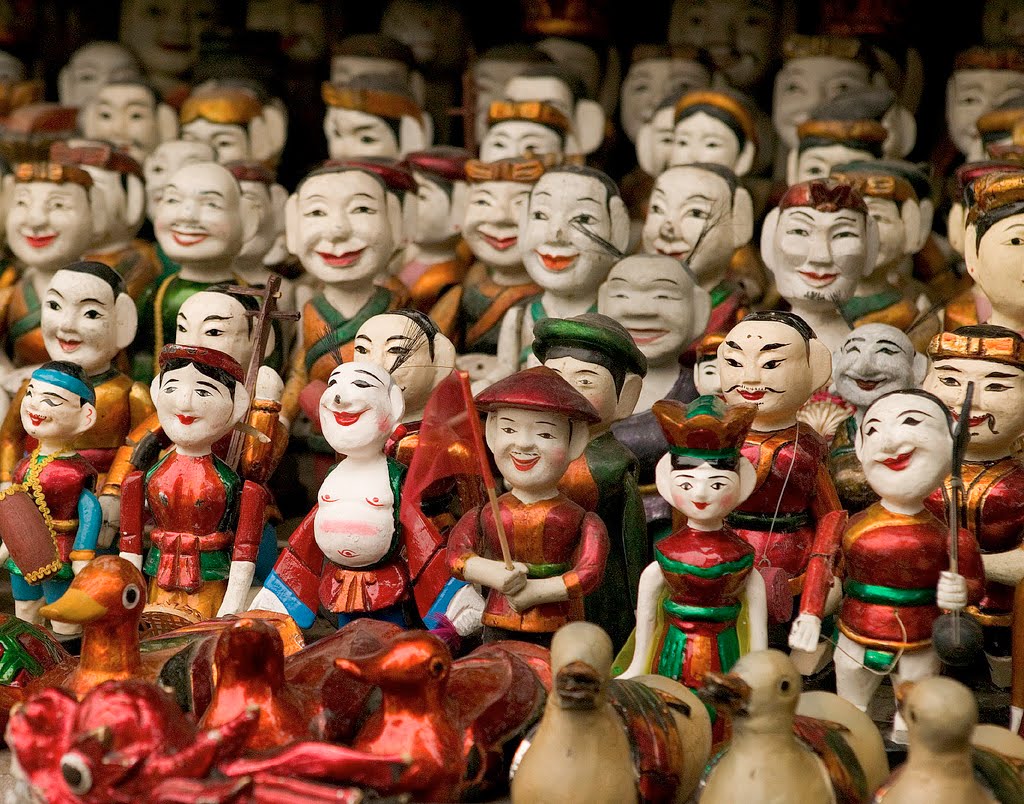
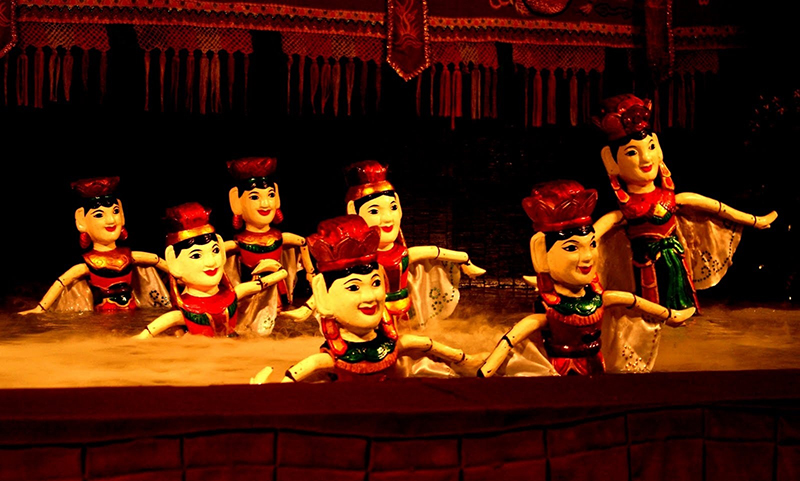
Puppetry artists do not show themselves while performing but hide behind the set backed by a bamboo blind curtain hanging over the water. The set often depicts some familiar settings such as a pagoda or a communal house common in all Vietnamese villages. Around eight to ten artists stand in waist deep water operating the puppets while looking through the curtain’s slits to follow their movements on stage. Thanks to the control system, every move they make is conveyed into the puppets’ graceful liveliness. The art of puppet operation has remained a closely guarded secret to date for centuries. Synchronizing puppets’ movements including facial expressions and gestures across the stage often requires a multiple puppet control unit. To operate this unit, which is heavier than a single puppet one, the operator must be physically fit. In general, performing water puppetry shows is hard work entailing hours wadding in cold even in winter. Performing artists in the old days were susceptible to cold, leech bites, waterborne infection and diseases. Rheumatism was one of the ailments they got from prolonged water immersion. To keep warm and prevent hypothermia, they often drank fish sauce and ginger tea before each performance. Though performing remains a physical challenge, problems with water are much less of a concern for modern puppeteers as they are protected by their specialized waterproof performer suits.
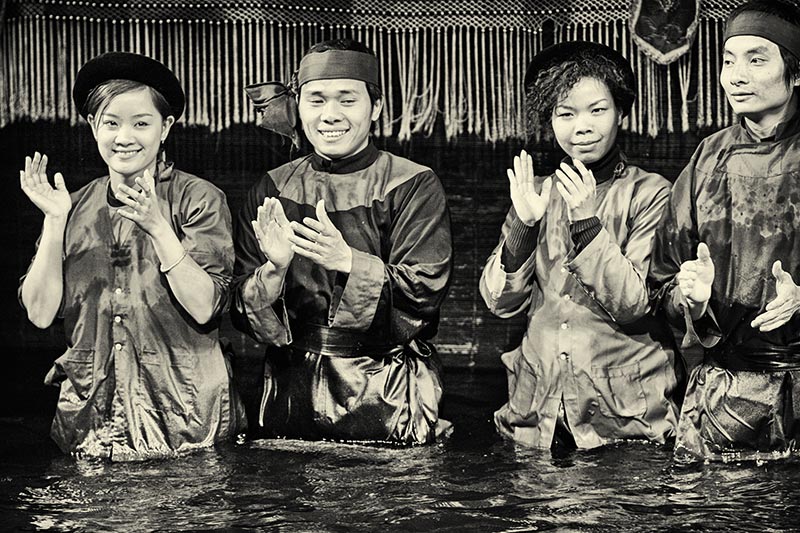
Starting as a type of self-entertainment among rural communities, water puppetry has evolved through generations into a world-recognized art of Asian tradition and a crucial highlight of Vietnam tours. Water puppetry shows often bring a lot of laughers, delight and relaxation, as that is what the art is meant to be. The ancient Vietnamese villages and villagers are comically portrayed through sequence of varied scenes. For the ancient farmers, the art was much more than pure entertainment as it provided a getaway from the reality of a hard farming life. Hidden inside it are the love of life, love of the homeland and the longing for a carefree life in prosperity of Vietnamese rice-growing farmers. That perhaps is the reason why water puppetry is considered “The soul of the rice fields of Vietnam”.




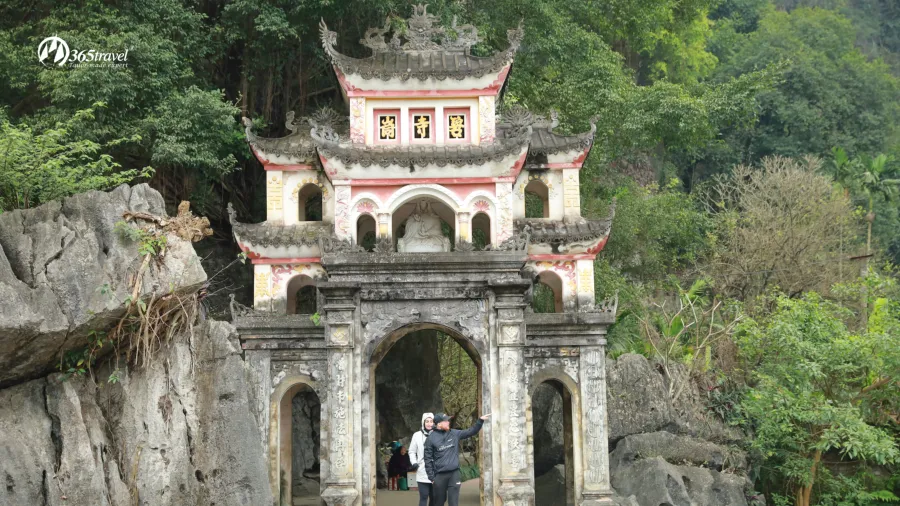

 17 Years of Experience & Expertise
17 Years of Experience & Expertise